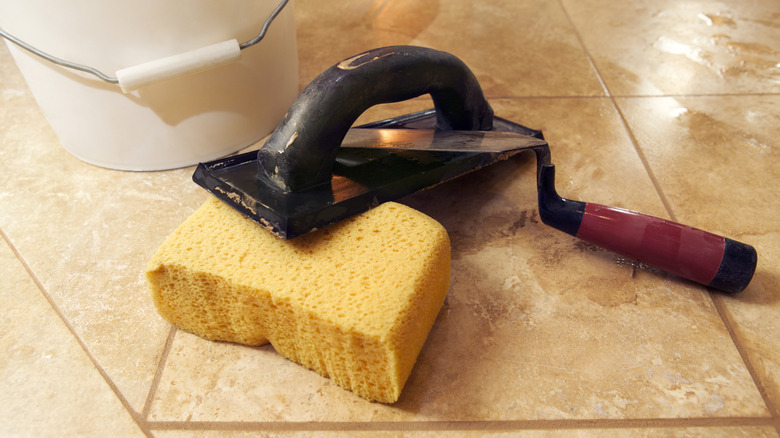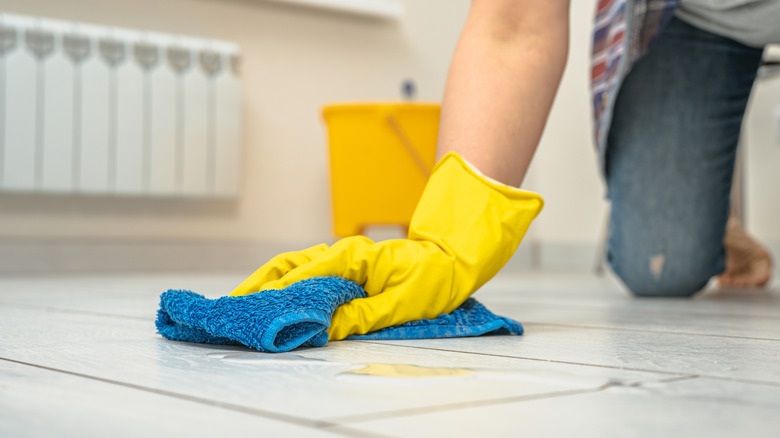The Best Method For Restoring Damaged Stone Tile Back To Its Original Glory
We may receive a commission on purchases made from links.
Stone tiles are a durable and timeless surfacing option for any space, which is why they are a natural home decor trend that's coming back around. But over time, they are prone to becoming scratched, stained, or faded, especially in high-traffic rooms or in homes where dirt, moisture, or road salt are frequently tracked inside. Whether you love the glossy elegance of polished marble or the natural, rustic feel of slate, damaged stone tiles can take away from your home's beauty. The good news is that restoring them to their original glory is not only possible but can be a relatively straightforward process when you use the right approach. A full restoration will involve grinding, rehoning, polishing, and sealing.
A thorough damage assessment is essential before moving forward with restoration. Small scratches, dullness, or grime buildup can often be corrected with the proper cleaning and polishing techniques. Larger cracks, chips, or severe discoloration will likely need more intensive treatments. No matter the damage, the key to successful restoration lies in using the right method, tools, and products for your particular type of stone. Whether you're dealing with granite, marble, or travertine, each type has its own properties that require specific restoration techniques. Let's explore how you really should be cleaning your tile floors and the best ways to bring them back to their former beauty.
Effective methods for restoring stone tile
For minor damage, you want to start by applying products and cleaners that are safe for stone floors, for example, a pH-neutral cleaner to remove dirt, build-up, and soap scum. For glossy stone tiles like marble or limestone, a gentle polish can help bring back the shine. Make sure you always use a soft cloth or a microfiber towel in order to prevent new scratches from appearing. If your tiles have surface scratches or dullness, a light abrasive cleaner or a specialized stone polish like Granite Gold Polish Spray can be used in a process called rehoning. Follow this up with a buffing cloth to restore the shine.
For deeper surface scratches, grinding may be necessary before polishing. This process involves using a diamond abrasive pad to smooth out the surface and remove imperfections, helping to restore the tile's even texture. Grinding should be done carefully to avoid removing too much material, especially with softer stones like marble or travertine.
In cases where tiles are chipped or cracked, using a stone repair kit can help fill in the damage. These kits usually come with a color-matched resin that can be applied to fill in cracks and chips and make the damage less noticeable. For more extensive damage, you may need to call in a professional stone restoration specialist. Lastly, sealing your stone tiles after cleaning and restoring them is essential to preventing any future damage. A good stone sealer protects the surface from stains and water penetration, helping to maintain the sheen and prolong the life of your tiles.

